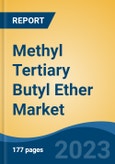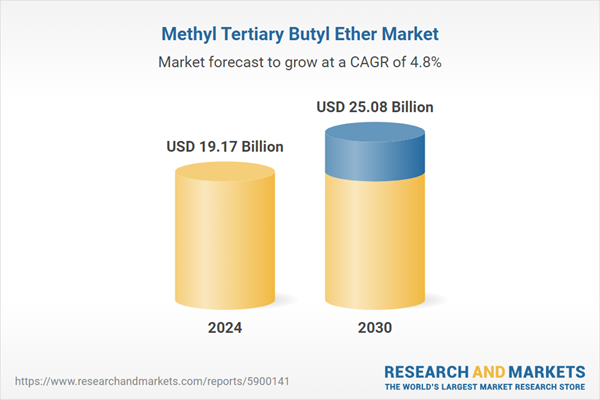Speak directly to the analyst to clarify any post sales queries you may have.
10% Free customizationThis report comes with 10% free customization, enabling you to add data that meets your specific business needs.
Beyond its primary use in fuel applications, MTBE also finds niche utility in the medical field, particularly in gallstone dissolution procedures, highlighting its diverse functional benefits.
Key Market Drivers
Rising Demand from the Transportation Industry
The MTBE market is significantly driven by growing demand in the transportation sector. With logistics costs in the global Transportation & Logistics market projected to hit USD 14.39 trillion by 2029, the expansion of this sector directly correlates with increased fuel consumption.MTBE, a volatile, flammable, and colorless liquid with limited water solubility, is extensively used as a fuel additive due to its high oxygen content, which enhances combustion and raises octane ratings - thereby reducing engine knocking. The rapid growth of the global vehicle fleet and automotive industry continues to push gasoline consumption upward, fueling the demand for MTBE in fuel formulations worldwide.
Key Market Challenges
Crude Oil Price Volatility
As a petroleum-derived fuel additive, MTBE is highly sensitive to fluctuations in crude oil prices. These price swings create instability in the cost structure of MTBE production, challenging producers to maintain consistent pricing and profitability.Surges in oil prices increase manufacturing costs, potentially driving up MTBE prices and discouraging use in price-sensitive regions. Conversely, falling oil prices may reduce input costs but can lead to oversupply and margin pressures. These dynamics demand agile production and pricing strategies from market participants to navigate uncertainty and ensure sustainable operations in a volatile global energy landscape.
Key Market Trends
Integration with Refining Operations
More than 95% of MTBE produced globally is utilized in gasoline blending. Recognizing its importance and cost-efficiency, many refineries have integrated MTBE production directly into their operations. This vertical integration helps optimize resource utilization, improve process efficiency, and reduce production costs - ultimately enhancing overall profitability for refinery operators.Key Market Players
- China National Petroleum Corporation
- Eni S.p.A
- ENOC Company
- Enterprise Product Partners L.P.
- Evonik Industries AG
- Formosa Plastics Corporation, U.S.A.
- Gazprom Neft PJSC
- LyondellBasell Industries Holdings B.V.
- Reliance Industries Ltd.
- SABIC
Market Segmentation
By Manufacturing Process:
- Steam Cracker
- Fluid Liquid Cracker
- Others
By Application:
- Gasoline
- High Purity Isobutene
- Medical Intermediates
- Others
By Region:
- North America
- United States
- Canada
- Mexico
- Europe
- France
- United Kingdom
- Italy
- Germany
- Spain
- Asia Pacific
- China
- India
- Japan
- Australia
- South Korea
- South America
- Brazil
- Argentina
- Colombia
- Middle East & Africa
- South Africa
- Saudi Arabia
- UAE
Competitive Landscape
The report includes detailed company profiles of major players operating in the MTBE market, offering insights into their strategies, product offerings, and market positioning.Available Customizations
TechSci Research provides tailored solutions based on client requirements. The following customization options are available:
- In-depth analysis and profiling of additional market players (up to five)
This product will be delivered within 1-3 business days.
Table of Contents
Companies Mentioned
- China National Petroleum Corporation
- Eni S.p.A
- ENOC Company
- Enterprise Product Partners L.P.
- Evonik Industries AG
- Formosa Plastics Corporation, U.S.A.
- Gazprom Neft PJSC
- LyondellBasell Industries Holdings B.V.
- Reliance Industries Ltd.
- SABIC
Table Information
| Report Attribute | Details |
|---|---|
| No. of Pages | 185 |
| Published | July 2025 |
| Forecast Period | 2024 - 2030 |
| Estimated Market Value ( USD | $ 19.17 Billion |
| Forecasted Market Value ( USD | $ 25.08 Billion |
| Compound Annual Growth Rate | 4.7% |
| Regions Covered | Global |
| No. of Companies Mentioned | 10 |









